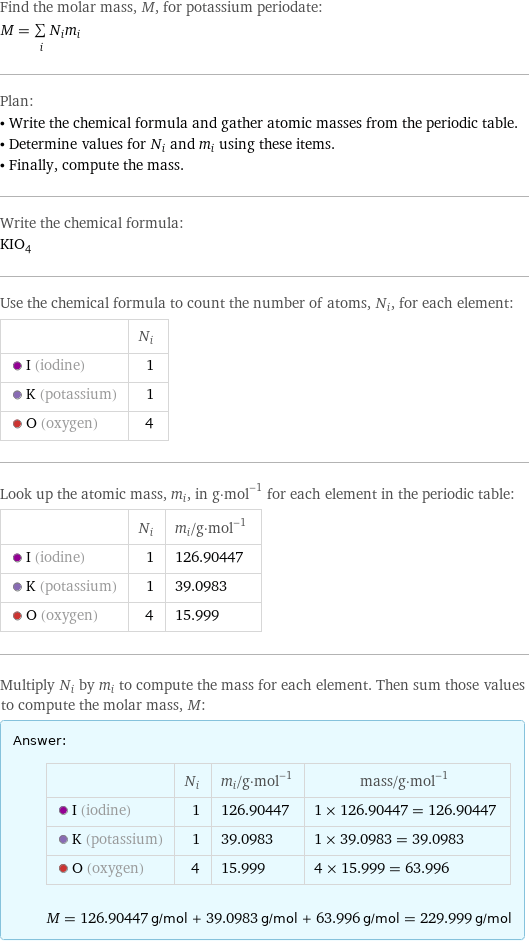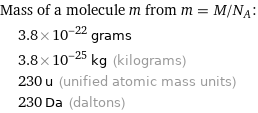Input interpretation

potassium periodate | molar mass
Result

Find the molar mass, M, for potassium periodate: M = sum _iN_im_i Plan: • Write the chemical formula and gather atomic masses from the periodic table. • Determine values for N_i and m_i using these items. • Finally, compute the mass. Write the chemical formula: KIO_4 Use the chemical formula to count the number of atoms, N_i, for each element: | N_i I (iodine) | 1 K (potassium) | 1 O (oxygen) | 4 Look up the atomic mass, m_i, in g·mol^(-1) for each element in the periodic table: | N_i | m_i/g·mol^(-1) I (iodine) | 1 | 126.90447 K (potassium) | 1 | 39.0983 O (oxygen) | 4 | 15.999 Multiply N_i by m_i to compute the mass for each element. Then sum those values to compute the molar mass, M: Answer: | | | N_i | m_i/g·mol^(-1) | mass/g·mol^(-1) I (iodine) | 1 | 126.90447 | 1 × 126.90447 = 126.90447 K (potassium) | 1 | 39.0983 | 1 × 39.0983 = 39.0983 O (oxygen) | 4 | 15.999 | 4 × 15.999 = 63.996 M = 126.90447 g/mol + 39.0983 g/mol + 63.996 g/mol = 229.999 g/mol
Unit conversion

0.229999 kg/mol (kilograms per mole)
Comparisons

≈ 0.32 × molar mass of fullerene ( ≈ 721 g/mol )

≈ 1.2 × molar mass of caffeine ( ≈ 194 g/mol )

≈ 3.9 × molar mass of sodium chloride ( ≈ 58 g/mol )
Corresponding quantities

Mass of a molecule m from m = M/N_A: | 3.8×10^-22 grams | 3.8×10^-25 kg (kilograms) | 230 u (unified atomic mass units) | 230 Da (daltons)

Relative molecular mass M_r from M_r = M_u/M: | 230